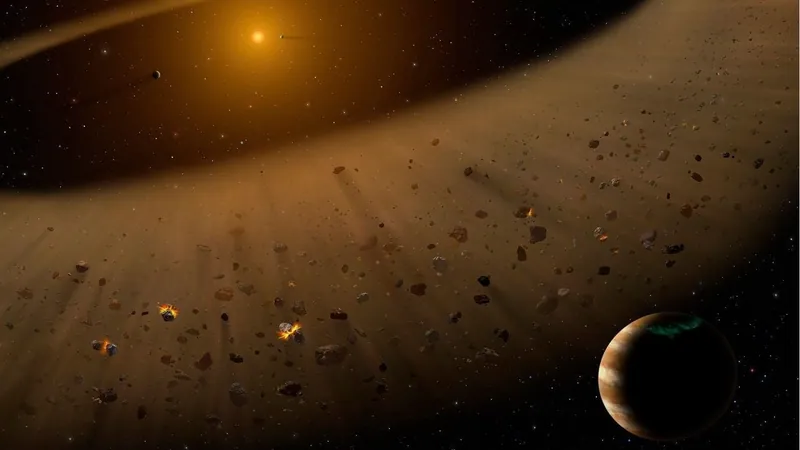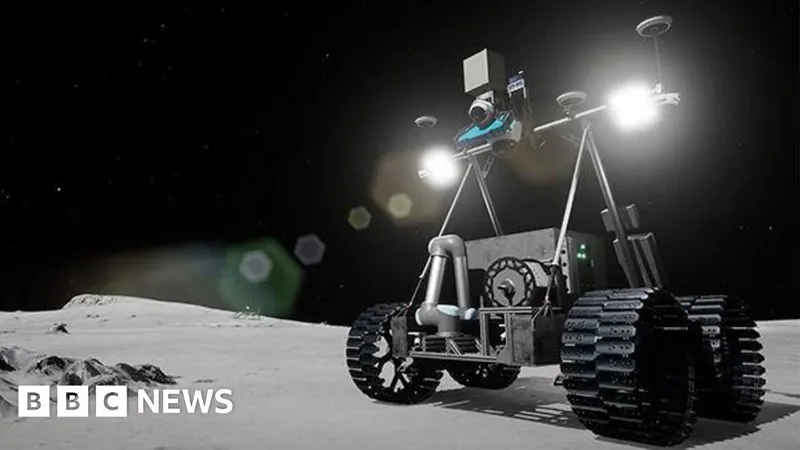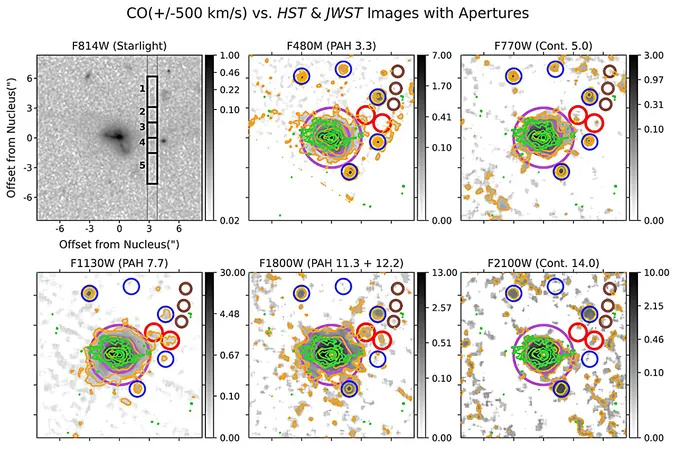
JWST's Bold Hunt for Planets at Epsilon Eridani: A Quest that Shines Despite Setbacks
2025-08-27
Author: Jacques
In the world of astronomy, sometimes a 'no' can be just as groundbreaking as a 'yes.' This was the case for the James Webb Space Telescope (JWST) in its ambitious mission to unveil the mysteries of Epsilon Eridani, one of our closest stellar neighbors, located about 10.5 light years away.
The tension surrounding Epsilon Eridani has been palpable for decades. Scientists have long debated whether this star, a mere 400 million years old, hosts any planets. JWST utilized its highly advanced NIRCam instrument to search for two potential planets orbiting this intriguing star.
Initially, researchers believed they spotted a blob of light that appeared to be the elusive planet Epsilon Eridani b, rumored to be a Jupiter-sized giant orbiting at a distance of 3.5 AU. However, excitement quickly turned into caution as this promising signal was found to be drenched in noise from a nearby instrument artifact—essentially a distortion that made it impossible to definitively declare it a planet.
But the JWST didn't stop there. It also sought evidence of a second planet, thought to be shepherding the stunning rings encircling Epsilon Eridani. Unfortunately, the findings ruled out any Saturn-sized planets beyond 16 AU—putting the kibosh on the shepherding theory.
In a twist, JWST did discover a faint signal on the eastern side of Epsilon Eridani, but it was likely just dust from the star's disk scattering light—not a hidden planet waiting to be found. The implications of these discoveries stretch far beyond negative results, signaling a treasure trove of information about the star system's makeup.
Crucially, this mission also marked a testing ground for JWST’s new 'three-roll' observing strategy, which boosted the telescope's ability to detect faint objects by an impressive 20% to 30%. This innovative technique could reshape how we observe distant worlds in the future.
While some may view the non-detection of planets as a setback, it’s a significant leap forward for science, offering constraints on the presence of planets in this star system and providing valuable lessons for future observations. As JWST continues its journey through the cosmos, the potential for groundbreaking discoveries is more vibrant than ever.









 Brasil (PT)
Brasil (PT)
 Canada (EN)
Canada (EN)
 Chile (ES)
Chile (ES)
 Česko (CS)
Česko (CS)
 대한민국 (KO)
대한민국 (KO)
 España (ES)
España (ES)
 France (FR)
France (FR)
 Hong Kong (EN)
Hong Kong (EN)
 Italia (IT)
Italia (IT)
 日本 (JA)
日本 (JA)
 Magyarország (HU)
Magyarország (HU)
 Norge (NO)
Norge (NO)
 Polska (PL)
Polska (PL)
 Schweiz (DE)
Schweiz (DE)
 Singapore (EN)
Singapore (EN)
 Sverige (SV)
Sverige (SV)
 Suomi (FI)
Suomi (FI)
 Türkiye (TR)
Türkiye (TR)
 الإمارات العربية المتحدة (AR)
الإمارات العربية المتحدة (AR)